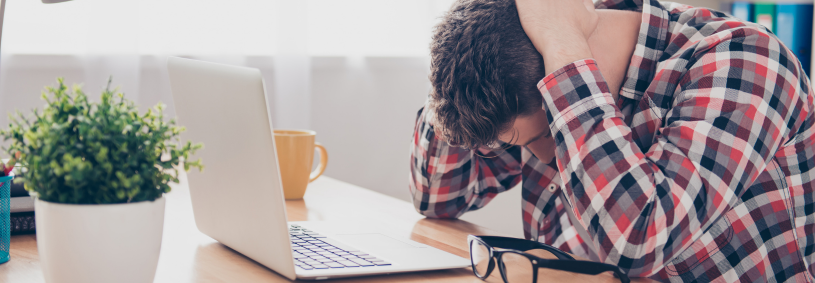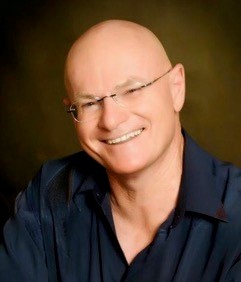Headaches, You and Massage
- Blog
- Headaches, You and Massage

Good news for headache sufferers!
If you’ve always regarded massage as just a self-indulgent luxury, it’s time to look again. An Oxford University study on the effects of touch on general well-being concluded that we need more caring, human touch, especially as we age or live alone. The message is clear: we all need massage regularly!
Modern life, with its growing emphasis on single living, long hours at screens, and high stress, is turning many of us into headache-prone, touch-starved individuals.
Why Massage Works
Skin—our body’s largest organ, makes up around 20% of our body mass. When stimulated by massage, skin receptors send messages that increase the production of oxytocin (the “relaxation” hormone) and decrease cortisol (the “stress” hormone). The result? Reduced tension, better sleep, and less pain.
When comedian Bob Hope turned 100, he was asked his secret to healthy longevity. His answer:
“I laugh at everything and have a massage every day.”
Not all of us can afford daily massages, but there’s no doubt that prioritising regular bodywork helps maintain mobility, energy, and mental clarity.
Massage and Headache Relief
Stress-induced headaches are on the rise—and massage is a proven way to combat them. Especially when combined with soft tissue mobilisation, massage can help:
- Reduce pain from tight scalp and neck muscles
- Improve mobility of neck joints
- Enhance posture
- Improve sleep quality
- Boost energy and alertness
- Increase circulation (especially helpful for those with diabetes)
- Promote deep relaxation and lower stress levels
Many clients dealing with headaches say their favourite part of the treatment is finishing with a thorough scalp and neck massage, gentle, relaxing, and deeply therapeutic.
Complementary Approaches for Headaches and Migraines
As a massage therapist, I specialise in treating muscular tension—a major cause of headaches. Here’s how we approach it from different angles:
Muscular Tension
Tension in the muscles, tendons, and fascia of the scalp, neck, and shoulders is often at the root of headaches.
- Muscles respond best to deep tissue massage and kneading.
- Tendons benefit from gentle mobilisation techniques, such as tendon-flicking.
- Fascia the connective tissue web, responds well to slow, sustained stretching and myofascial release.
Stretching
Stretching is vital for elongating muscle tissue, improving flexibility, and enhancing blood flow. Specific guided stretches can also “switch on” or “switch off” particular muscle groups, restoring their optimal length and function. (Ask your therapist for a demonstration.)
Bodywork Techniques
Massage and bodywork techniques have been developed over thousands of years. They include:
- Kneading, friction, cupping, hitting, stroking, rolling
- Heat therapy to relax and soften tight tissues
These techniques are used to: - Break up “knots,” fibrosities, and adhesions
- Reduce scar tissue
- Stimulate lymphatic flow and joint lubrication
- Alleviate blood stagnation and congestion
Topical Liniments
Natural liniments often contain:
- Menthol
- Wintergreen
- Eucalyptus
- Tea tree oil
These ingredients help soothe pain, reduce inflammation, and encourage circulation.
Reflexology, Acupressure & Trigger Point Therapy
These techniques stimulate pressure points that correspond to headache relief. Especially effective when direct massage is not suitable, such as after an injury or with skin conditions.
Postural Correction
Poor posture is a common contributor to chronic headaches. Remedies include:
- Ergonomic chairs and desks
- Lumbar support devices
- Correct pillow types tailored to your physique and sleep style
- Standing desks or posture reminders throughout the day
Aromatherapy
Using essential oils at home,or asking your therapist to incorporate them into your massage, can elevate your relaxation and healing experience. Popular oils include lavender, peppermint, and chamomile.
Naturopathy & Nutrition
Sometimes, your headaches may be triggered by food intolerances or environmental allergens. A visit to a qualified naturopath can help identify these underlying causes and offer natural remedies or dietary changes.
Choose Qualified Professionals
Work with massage therapists trained in a wide variety of techniques who can also refer you to allied health professionals if needed. Collaboration often leads to the most effective treatment plans.
Time to Take Action
Headaches are a message from your body, asking for attention, care, and healing. Don’t ignore them. Prioritise time for bodywork, improve your posture, stretch often, and seek out therapeutic massage from a trusted professional.
Maximise your dreams, keep up your performance, and remove those aches and pains. Let your body recover faster with an integrated approach to wellness, starting with a good massage.
More about the author

Paul Camac
Paul is a specialist remedial massage therapist. He completed his first massage diploma under Simon and Maria Schot in 1977 at Mapleton on the Sunshine Coast. He has practiced therapeutic massage since and served as a trainer in massage schools.
He added a series of training qualifications to augment his clinical skills. A Cert IV in Training and Workplace Assessment; a further diploma in Remedial Massage and an Enact Smart Business Entrepreneur Certificate.
One highlight of his clinical experience was 2 years in Charleville. Here he practiced working in with the local flying chiropractor, covering the South-West of Queensland. He moved to the Sunshine Coast where he worked for 2½ years in the renowned Niblett Technique Clinic at Coolum, where he learned their soft and deep tissue speciality. He later served as their Company Director and Trainer in this soft tissue modality, writing their first training manual.
Following his departure from the Niblett Clinic, Paul set up two clinics, the first in the Medicross Medical Centre opposite the Nambour General Hospital: the second as a home-based practice to serve as a home model for other practitioners.
In the ensuing four years, he completed a Diploma in Orthopractics with the Australian College of Orthopractics based in Melbourne. This speciality qualification in manual body treatment uses advanced mobilization and body alignment techniques. Today from his home-based clinic, he trains massage therapists wishing to specialise in advanced massage and tendon mobilizing techniques.
Other Blog In This Category

The ATMS Research Grant allocates up to AU$20,000 to support natural medicine research that aligns the goals of the ATMS Strategic Plan.

At the ATMS AGM, the 2024 - 2025 Simon Schot Education Grants were awarded to the following ATMS member.
